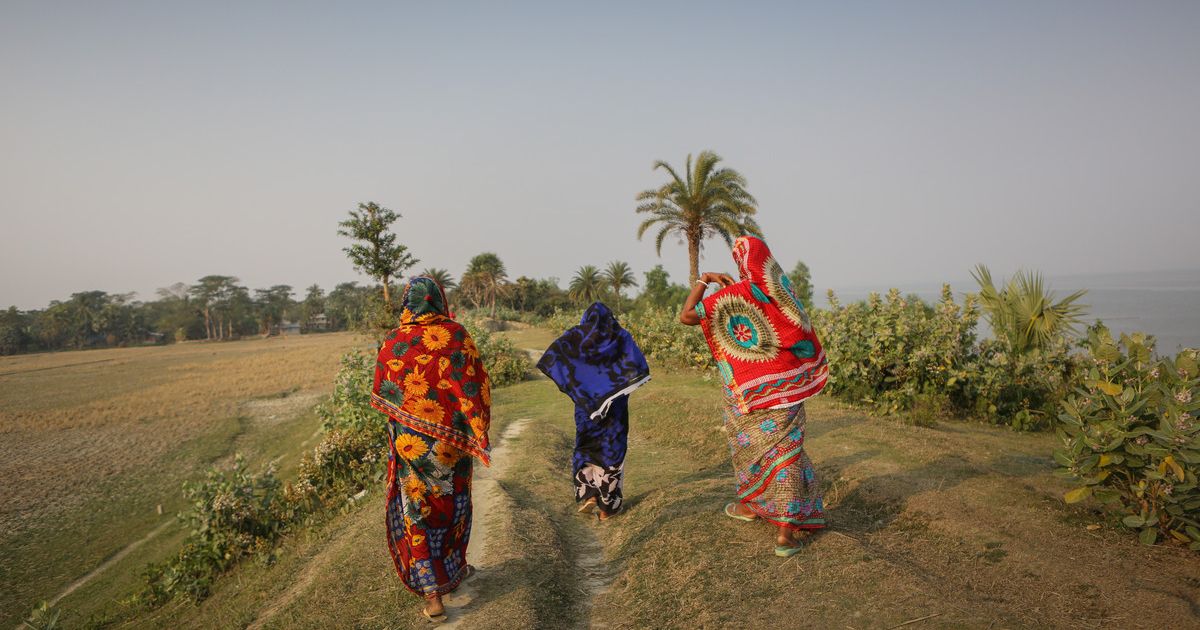
The recent climate crisis has cast an ominous shadow on the world with increasingly chaotic weather patterns that have severely impacted the lives of its most vulnerable populations. Among these, women in rural and impoverished regions face a particularly harsh reality, exacerbated by their pivotal roles in agriculture and household resource management. With climate change intensifying, the resultant shifts in weather patterns—ranging from unpredictable rainfall to severe droughts and floods—pose not only a threat to livelihoods but also magnify existing inequalities, placing a disproportionate burden on women.
According to recent World Bank data, in the rural areas of Pakistan, where agriculture forms the backbone of local economies, around 67% of crop production and livestock care is in the hands of women. As climate change jeopardizes these activities through increased temperatures and altered precipitation patterns, women’s workload, and stress levels surge without an equivalent increase in resources or support. Dwindling water resources due to receding groundwater levels and drying rivers further increase the pressure on women in rural areas of Balochistan and Sindh as they are often burdened by the responsibility of traveling long distances to collect water for the household. This not only places a physical strain on women but also limits their time for other productive or educational pursuits.
Climate change negatively impacts human capital, but the effect is far worse for women and girls due to the sensitive nature of their role in household management. Often, women and young girls are pulled out of school after a climate disaster due to increased household poverty or increase in household responsibility. According to the World Bank, the 2022 flooding in Pakistan hindered education access for around 3.5 million children. A quantified gendered analysis of climate induced dropouts is currently not available, but research shows that since women are considered the caretakers of the house, dropout rates for young girls rise in times of crisis due to increased need for disaster management within the household. This makes matters worse as it restricts their access to the formal education and employment sector and reduces their autonomy in decision-making, eventually contributing to gender-based violence as women are exposed to early marriages and domestic violence.
Extremes in temperatures reduce labour productivity and negatively impact the economic capacity of women. This, coupled with pre-existing impediments that confine them to household work, has the potential to decrease their adaptive capacity and willingness to participate in the labour force as they not only have to work but take care of household responsibilities as well, resulting in added physical and mental pressure. In terms of mobility, women are not only discriminated against in regard to being confined to their houses in times of distress but are also prevented from migrating in search of employment opportunities resulting in reduced potential and capabilities that might expand their horizons. While men have the resources and opportunities to improve their lives after a disaster, women do not have the same liberty, and are often left to adapt on their own.
Health concerns also escalate as climate change impacts the availability of clean water and exacerbates the spread of water-borne diseases, which particularly affect women and children. Maternal health is at risk as well, with heatwaves and nutritional deficits caused by poor crop yields leading to increased complications in pregnancies. Climate-induced food insecurity can result in increased rates of maternal mortality and child malnutrition causing loss of lives and poor physical and mental development of children in the household. Despite these glaring issues, access to healthcare remains limited for many women in Pakistan, tied down by socially constructed vulnerabilities such as mobility restrictions and financial constraints. During extreme floods, women face casualties due to restricted mobility and inability to swim and often wait for their male household members to come home and travel to safety with them. Furthermore, menstrual management becomes difficult for women in areas impacted by climate change due to uncertain and limited access to water and sanitation material. The Multiple Indicator Cluster Survey (MICS) reported that around 66% of women in rural Sindh lack access to menstrual products at home and a private place to change and wash during their period. This not only restricts their involvement in the public sphere and exacerbates existing gender disparities but endangers their lives and forces them further into poverty.

